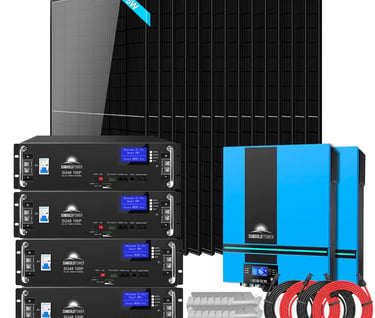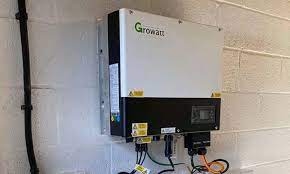Essential Components of an Off-Grid Solar System: A Comprehensive Guide
Dive into our thorough guide detailing the essential components of an off-grid solar system, and learn how to harness the power of the sun for self-sufficient, renewable energy.


Essential Components of an Off-Grid Solar System: A Comprehensive Guide
Harnessing renewable energy sources like solar power is rapidly becoming a mainstream solution for energy needs worldwide. Especially for those aiming for energy independence, off-grid solar systems are a popular choice. But what are the critical components that make an off-grid solar system function seamlessly? This comprehensive guide aims to shed light on the various parts of an off-grid solar system.
1. Solar Panels:
The most visible part of a solar setup, solar panels consist of photovoltaic cells that convert sunlight into electrical energy in the form of direct current (DC).
2. Solar Inverter:
A solar inverter transforms the DC electricity generated by the solar panels into alternating current (AC), suitable for use in household appliances.
3. Battery Bank:
An essential component of any off-grid solar system, battery banks store excess energy produced during the day. This stored energy can be used during nighttime or on cloudy days when solar generation is low.
4. Charge Controller:
A charge controller manages the flow of electricity between the solar panels and the battery bank, protecting batteries from overcharging and ensuring efficient energy storage.
5. Disconnect Switches:
These switches allow you to shut down the system for maintenance, emergency, or isolation of individual components for troubleshooting.
6. Backup Generator:
In an off-grid setup, having a backup generator can provide extra assurance, supplying power during extended periods of inadequate sunlight.
7. Monitoring System:
A monitoring system helps track the performance of a solar system, providing valuable insights into energy production and consumption.
8. Wiring and Fuses:
Wires connect various system components, while fuses act as safety devices, breaking the circuit if the current flow exceeds a predetermined level.
9. Mounting Equipment:
Mounting hardware, including racks and brackets, offer a secure platform for the solar panels, either on the roof or the ground.
10. Grounding Equipment:
Grounding ensures that your solar system is safe, connecting portions of the solar array and the electrical circuits to the ground to prevent electric shocks.
Conclusion:
Understanding the essential components of an off-grid solar system is crucial when considering a path towards energy independence. Investing in a personal solar system can be empowering, lowering electricity bills, and contributing to a greener planet. So why wait? Harness the power of the sun and become part of the solar revolution!
1. Solar Panels: These are the most noticeable part of a solar system. The panels absorb sunlight and convert it into direct current (DC) electricity.
2. Solar Inverter: This device converts the DC electricity produced by the solar panels into alternating current (AC) electricity, which is used by most home appliances.
3. Battery Bank: In an off-grid solar system, battery banks are crucial as they store electricity produced by solar panels. This stored energy can be used when solar panels are not generating electricity, e.g., during the night or on cloudy days.
4. Charge Controller: This device ensures that the batteries are charged properly and efficiently. It controls the voltage and current coming from the solar panels and prevents the batteries from overcharging.
5. Disconnect Switches: These are safety devices that allow for the complete shutdown of the system for maintenance or in case of an emergency.
6. Backup Generator: While this is not a required component, many off-grid solar systems have a backup generator for extra security in case of longer periods without adequate sunlight.
7. Monitoring System: This component allows you to monitor and measure the performance of your system, including energy production and consumption.
8. Wiring and Fuses: These connect all the components of the solar system and ensure they are functioning properly and safely.
9. Mounting Equipment: This includes the racks to hold the solar panels and hardware to secure the racks to the roof or ground.
10. Grounding Equipment: Necessary for the safety of the system, grounding equipment connects parts of the solar array and the electrical circuit to the ground to prevent shocks.
All of these components work together to ensure your off-grid solar system operates efficiently, meets your power needs, and is safe for use.


